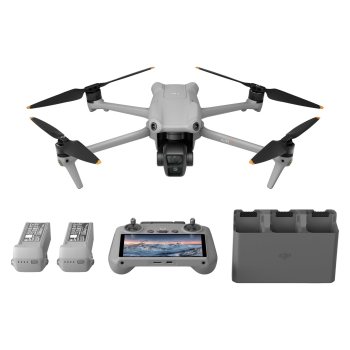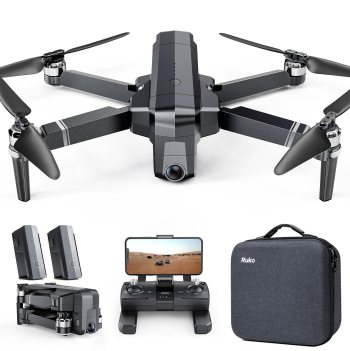- High-quality camera
- Advanced safety features
- Long battery life
- High-quality camera
- Long flight time
- Portable
- Premium price
- Requires some setup
- Moderate range
- Setup required
DJI Air 3 vs Ruko F11 Pro
The world of hobby drones has exploded in recent years, with numerous manufacturers vying for attention from enthusiasts and professionals alike. Two popular models that have garnered significant interest are the DJI Air 3 and the Ruko F11 Pro. In this comparison, we'll delve into the features, specifications, and performance of these two drones to help you decide which one is best suited for your needs.
Design and Build
The DJI Air 3 boasts a sleek and compact design, weighing in at approximately 720 grams. Its foldable arms and lightweight construction make it an ideal choice for travelers and those who want a drone that's easy to transport. The Ruko F11 Pro, on the other hand, has a more traditional quadcopter design, with a slightly larger footprint and a weight of around 920 grams. While not as portable as the DJI Air 3, the Ruko F11 Pro's build quality is robust and durable.
Camera Capabilities
When it comes to camera performance, both drones have their strengths. The DJI Air 3 features a 1/2-inch CMOS sensor, capable of capturing 48-megapixel stills and 5.3K video at 30fps. The camera also boasts an impressive 84-degree field of view and supports features like ActiveTrack, Spotlight, and Hyperlapse. In contrast, the Ruko F11 Pro is equipped with a 1/3-inch CMOS sensor, which can capture 4K video at 30fps and 12-megapixel stills. While not as high-resolution as the DJI Air 3, the Ruko F11 Pro's camera is still capable of producing excellent footage, especially considering its lower price point.
Flight Performance
Hobby drones are all about the thrill of flight, and both models deliver in this regard. The DJI Air 3 has a maximum speed of 68 km/h (42 mph) and can maintain a stable hover for up to 46 minutes, thanks to its advanced propulsion system and efficient battery management. The Ruko F11 Pro, on the other hand, reaches speeds of up to 50 km/h (31 mph) and has a flight time of around 30 minutes. While not as fast or long-lasting as the DJI Air 3, the Ruko F11 Pro's flight performance is still impressive, especially considering its more affordable price.
Autonomy and Safety Features
Both drones feature advanced autonomy and safety features, including GPS, GLONASS, and obstacle avoidance systems. The DJI Air 3 takes it a step further with its Advanced Pilot Assistance System (APAS), which enables the drone to automatically avoid obstacles and navigate complex environments. The Ruko F11 Pro also has an obstacle avoidance system, although it's not as sophisticated as the DJI Air 3's APAS.
Price and Value
One of the most significant differences between these two drones is their price. The DJI Air 3 retails for around $1,300, while the Ruko F11 Pro can be found for approximately $400. For hobby drones enthusiasts on a budget, the Ruko F11 Pro offers an incredible value proposition, providing many of the features and capabilities of more expensive models at a fraction of the cost.
Conclusion
In conclusion, both the DJI Air 3 and the Ruko F11 Pro are excellent choices for hobby drones enthusiasts. The DJI Air 3 offers superior camera performance, advanced autonomy features, and longer flight times, making it an ideal choice for professionals and serious enthusiasts. On the other hand, the Ruko F11 Pro provides an impressive balance of features, performance, and value, making it an attractive option for those on a budget or just starting out in the world of hobby drones. Ultimately, the decision between these two models will depend on your specific needs, preferences, and budget.


















